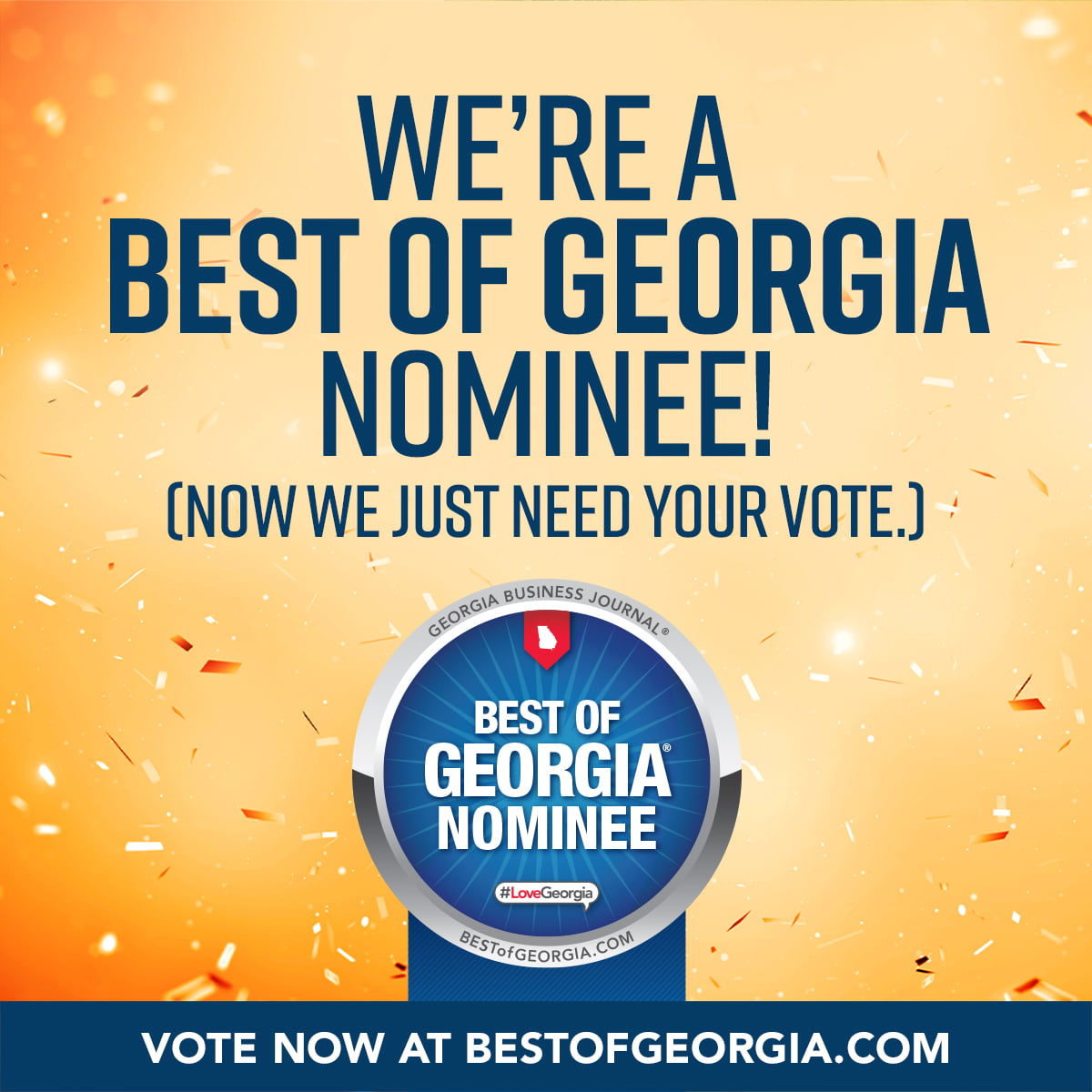Building a successful affiliate program hinges on one critical factor: finding the right affiliates who align with your brand values, resonate with your target audience, and possess the influence to drive meaningful results. Rather than simply recruiting the largest number of partners, the goal is to cultivate a network of authentic advocates who can communicate your message with credibility and convert their followers into loyal customers. In this guide, we’ll share actionable tips for finding the right affiliates, identifying, vetting, and onboarding affiliates who not only promote your products but also enhance your brand reputation and contribute to sustainable, long-term growth.
Finding the Right Affiliates: Tips to Grow Your Network Fast
What is Affiliate Marketing and Why is it Crucial for Your Brand’s Success?

Affiliate marketing is a performance-based strategy where external partners promote your product or service and earn a commission for each sale or lead they generate. It’s a cost-efficient approach because you only pay for actual results, not impressions or clicks. This model relies on tracking links and performance dashboards that attribute sales accurately, ensuring clear visibility into your ROI.
For growing brands, affiliate marketing is one of the most scalable ways to reach new audiences without significant upfront costs. Affiliates act as an extended sales force, bringing in customers who already trust their recommendations. This makes it especially powerful for smaller brands competing against larger players with bigger advertising budgets. Success in this space depends on finding the right affiliates who align with your brand’s audience and values—partners who bring both reach and relevance rather than just numbers.
How Does Affiliate Marketing Empower Small and Local Businesses?
For small and local businesses, affiliate marketing is an accessible and measurable way to grow without heavy spending. It turns local connections and community relationships into tangible sales opportunities. Instead of relying solely on traditional ads, small businesses can collaborate with micro-influencers, loyal customers, or nearby complementary businesses to promote their products.
These localized affiliates often deliver stronger results because they already have established trust with their audience. A neighborhood fitness trainer, for example, might promote a local health food store, or a popular local blogger might feature a small boutique. Using simple tools like tracking links or promo codes, businesses can see which partners drive sales or visits and adjust commissions accordingly. This transparency makes affiliate marketing one of the most efficient and risk-conscious strategies for local growth.
What Are the Latest Industry Trends Shaping Affiliate Marketing in 2025?
In 2025, affiliate marketing continues to grow as more brands recognize its effectiveness in connecting with audiences who value authenticity. One of the most notable trends is the rise of micro and nano influencers. These smaller creators often achieve higher engagement rates and better conversion results within niche communities than large-scale influencers.
Another key development is the shift toward privacy-friendly tracking methods, such as first-party data and server-side solutions, which help maintain accurate attribution even as browser restrictions evolve. Automation tools are also streamlining affiliate onboarding, commission management, and performance tracking, making it easier for small businesses to scale their programs efficiently.
As affiliate marketing matures, the focus has shifted from quantity to quality. Brands are learning that finding the right affiliates—partners whose audiences truly match their target market—produces better long-term results than chasing volume. This evolving landscape rewards businesses that invest in relationship-building, transparency, and smart incentive structures.
Affiliate marketing’s continued growth reflects its adaptability and reliability. For small and local businesses, it remains one of the most practical ways to expand visibility, strengthen brand trust, and generate consistent, measurable returns through authentic partnerships.
How Do You Define Your Ideal Affiliate Partner?

Defining your ideal affiliate partner begins with meticulously profiling audience overlap and assessing the affiliate’s proven capacity to influence purchase decisions. This strategic process translates your customer personas into precise partner selection criteria. The mechanism involves a straightforward mapping of your brand’s customer attributes (demographics, purchase intent, preferred channels) to an affiliate’s audience and content style, yielding the distinct benefit of predictable conversions from perfectly aligned partners. Practically, the outcome is a concise, actionable checklist you can leverage when evaluating prospective partners. The following sections break down the essential characteristics, affiliate types, and market research steps that empower brands to profile and secure high-fit affiliates.
What Characteristics Define a Successful Affiliate for Your Brand?
A truly successful affiliate demonstrates strong audience alignment, consistent content output, and reliable engagement metrics, all of which collectively translate attention into tangible action for your product. Key measurable indicators include an engagement rate that aligns with platform benchmarks, a consistent publishing cadence, transparent referral history, and content quality that seamlessly complements your brand voice. Reviews, case studies, or campaign analytics serve as invaluable vetting artifacts because they reveal how an affiliate’s audience responds to offers. Evaluating these indicators helps you strategically prioritize outreach to partners who are most likely to convert, which then informs your selection of affiliate types to consider next.
Which Affiliate Types Should Brands Prioritize: Influencers, Bloggers, or Review Sites?
The strategic choice of affiliate types hinges on your specific goals: whether you aim for awareness, consideration, or direct conversion. Each partner type offers distinct advantages and trade-offs. Influencers provide immediate social reach and impact for awareness campaigns; bloggers and review sites deliver robust SEO value and in-depth consideration content; while customer-referral affiliates bring unparalleled authenticity and higher conversion potential at a lower cost.
- Influencers: Optimal for rapid brand awareness and driving quick traffic through engaging, short-form social content.
- Bloggers and Review Sites: Excellent for SEO-driven consideration and long-term organic discovery via comprehensive content.
- Customer-Referrals: Best for achieving high-conversion authenticity and cost-effective customer acquisition.
Aligning the partner type with the appropriate stage in your marketing funnel significantly enhances program efficiency and naturally leads into the market research approaches detailed next.
For younger demographics like Gen Z, trust in influencers, the quality of their content, and the presence of attractive offers are particularly influential in driving purchasing decisions.
How Can Strategic Market Research Identify the Right Affiliates?
Strategic market research is instrumental in identifying high-potential affiliates by uncovering audience overlaps, pinpointing resonant content themes, and revealing existing promoters of competing products. This intelligence enables highly targeted outreach, replacing scattershot recruitment efforts. Key tools and methods include social listening to detect topical authority, audience persona mapping to identify precise overlaps, and competitor partner audits to surface proven promoters. An agency can streamline this process, providing data aggregation and curated lists, which set the stage for the practical recruitment tactics that follow.
- Clearly define your customer personas.
- Map potential partner audiences and their preferred platforms.
- Prioritize outreach based on measured engagement and content quality.
Leveraging an agency for in-depth audience analysis can significantly accelerate this process, providing data-driven insights and targeted lists that prepare you for the practical recruitment tactics ahead.
What Are the Most Effective Strategies for Recruiting High-Quality Affiliates?

Finding the right affiliates requires a focused, multi-channel approach that blends customer advocacy, affiliate network engagement, competitor research, and personalized outreach. The goal is to identify partners who already share your target audience and can deliver measurable results. Instead of casting a wide net, concentrate on cultivating relationships with affiliates who demonstrate genuine alignment with your brand values and customer base.
A strong recruitment plan begins with your existing customers. People who already know and trust your brand are often the most effective promoters because their recommendations carry authenticity. From there, use affiliate networks and social channels to expand your reach and connect with potential partners who have proven influence within your niche. Competitor research and outreach campaigns complete the process by helping you identify and attract high-performing affiliates.
How Can You Transform Existing Customers into Effective Affiliate Partners?
Your current customers are one of the most valuable sources for finding the right affiliates. Start by identifying repeat buyers or loyal fans who already advocate for your brand. Make it simple for them to join your affiliate program by offering a clear sign-up process, easy-to-use tracking links, and incentives that reward performance. Providing pre-made content, visuals, or discount codes helps them promote effortlessly while maintaining consistent brand messaging.
Customer-based affiliates offer a level of authenticity that traditional influencer campaigns often lack. Because their recommendations are grounded in personal experience, their audiences are more likely to engage and convert. Over time, this approach builds a network of trustworthy advocates who genuinely reflect your brand’s identity.
How Can Competitor Analysis Help You Find the Right Affiliates?
Competitor analysis is one of the most efficient ways to discover affiliates already performing well in your industry. By studying who promotes similar products, you can identify potential partners whose audiences align closely with yours. Tools that analyze backlinks, referral traffic, or sponsored content can reveal which creators or publishers are generating strong engagement for your competitors.
Once identified, approach these affiliates with personalized outreach that highlights what makes your brand or commission structure more appealing. Position your offer as an opportunity for them to expand their earnings while giving their audience access to something fresh or higher value. This data-driven method ensures that your recruitment efforts are focused on partners with proven performance potential.
What Are the Best Ways to Reach Out to Potential Affiliates?
When reaching out to potential affiliates, focus on personalization and clarity. Start with a short introduction that acknowledges their content or audience and explain why a partnership would be mutually beneficial. Provide specific details about your product, the target market, and what sets your affiliate program apart. Keep the invitation straightforward, with a simple next step such as joining a program or setting up a quick call.
Follow up consistently but respectfully, offering additional information or creative assets that make it easier for them to promote your products. A personalized approach signals professionalism and increases the likelihood of securing strong partnerships.
How Can Events and Content Design Strengthen Affiliate Recruitment?
Industry conferences, local business expos, and influencer meetups can be powerful opportunities to connect directly with potential affiliates. Face-to-face interactions help establish trust faster and create memorable first impressions. Bringing printed materials or quick sign-up options, like QR codes linking to your affiliate page, ensures smooth onboarding.
In addition, designing dedicated landing pages for your affiliate program can significantly improve conversions. These pages should clearly outline the benefits, commission structure, and support resources available to affiliates. Supplementing them with helpful guides, promotional graphics, and testimonial snippets makes it easier for affiliates to start promoting right away.
Together, these strategies create a sustainable system for finding the right affiliates—partners who not only drive conversions but also strengthen your brand credibility through authentic promotion and long-term collaboration.
How Do You Establish and Manage a High-Performing Affiliate Program?

Establishing and managing a high-performing affiliate program demands a strategic blend of policy design, robust technical tracking, optimized landing pages, streamlined onboarding workflows, and continuous analytics to sustain growth and safeguard program quality. The core mechanism is to engineer a measurable system where partners are recruited, tracked, rewarded, and supported in a manner that precisely aligns incentives with your brand’s overarching goals, leading to scalable conversions. The key benefit is a repeatable, transparent acquisition channel that can be finely tuned with data-driven insights. The subsections below cover essential commission models, landing page optimization, tracking implementation, onboarding best practices, and expert agency support options.
Begin by selecting commission and incentive structures that align perfectly with your margins and anticipated partner impact, a topic the next subsection clarifies with a comparative table.
What Defines a Compelling Affiliate Offer: Commission and Incentives Explained?
A compelling affiliate offer masterfully balances attractiveness to partners with your brand’s margin constraints; common models include flat-fee, percentage of sale, tiered rates, and hybrid incentives tied to volume or performance. Mechanically, each model influences partner motivation distinctly: percentage models reward higher-priced sales, flat fees are ideal for low-margin items, and tiered models powerfully incentivize growth. The table below compares typical commission approaches to help brands select an option perfectly aligned with their product type and budget.
| Commission Model | Rate / Payment Frequency / Cookie Duration | Best For |
|---|---|---|
| Percentage of Sale | Example: 10% / Monthly / 30 days | Physical products with healthy profit margins |
| Flat Fee | Example: $10 per sale / Biweekly / 14 days | Low-cost items or strategic lead-generation offers |
| Tiered Commission | Example: 5–15% based on volume / Monthly / 30–60 days | SaaS or high-margin products designed to incentivize scale |
Why Is an Optimized Affiliate Landing Page Absolutely Crucial?
An optimized affiliate landing page serves as both a powerful recruitment tool and a high-converting asset by clearly articulating the program’s value, simplifying the sign-up process, and providing essential resources that minimize friction for partners. The mechanism includes concise benefit statements, transparent commission examples, a streamlined sign-up form, and immediate access to promotional assets upon approval, all contributing to higher sign-up-to-active rates. Mobile optimization, clear calls to action (CTAs), and integrated tracking links ensure affiliates can share quickly and accurately measure performance. A meticulously structured landing page facilitates faster onboarding and higher initial activity, directly connecting to the tracking and analytics needs covered next.
How Do You Implement Robust Affiliate Tracking and Analytics for Peak Performance?
Implementing robust affiliate tracking and analytics involves issuing unique tracking links and UTM parameters, seamlessly integrating partner data into your analytics platforms, and establishing intuitive dashboards for regular reporting and proactive fraud monitoring. The core mechanism is to ensure end-to-end attribution from click to conversion using network dashboards, GA4, and server-side tracking where necessary, yielding trustworthy performance data for continuous optimization.
Common pitfalls include inconsistent UTM discipline, cookie mismatches across devices, and insufficient reconciliation between network and internal sales systems. A practical checklist includes generating precise tracking links, mapping key events in analytics, and establishing a consistent reporting cadence, all of which support effective onboarding and partner coaching covered next.
- Generate unique tracking links and consistent UTM parameters for every affiliate.
- Instrument conversions and key events within your analytics platform, mapping them precisely to affiliate IDs.
- Establish a weekly or monthly dashboard to meticulously reconcile affiliate payouts and detect any anomalies.
Summary: Proper tracking ensures fair payouts and enables data-driven program adjustments, while also supporting the streamlined onboarding flows described in the next subsection.
What Are the Best Practices for Onboarding and Supporting Affiliates?
Effective onboarding and support for affiliates begins with a streamlined welcome flow that clearly sets expectations, provides essential promotional assets, and schedules an initial check-in to empower affiliates to start promoting effectively. Best practices include automated welcome emails, a comprehensive resource kit (banners, swipe copy, tracking instructions), engaging onboarding webinars or concise video guides, and a defined communication cadence for performance updates.
Strategic recognition, engaging contests, and milestone bonuses are crucial for retaining high-performers, while a small test campaign helps validate affiliate effectiveness before scaling. A structured onboarding process significantly reduces friction and boosts early activity, and expert agencies can build and automate many of these workflows to save valuable time.
How Can Newman Web Solutions Elevate Your Affiliate Program Setup?
Newman Web Solutions, an Atlanta-based digital marketing agency, is uniquely positioned to elevate your affiliate program setup through expert landing page design, strategic SEO optimization, precise analytics implementation, and advanced marketing automation.
Our goal is to streamline recruitment and ensure accurate measurement. Our capabilities encompass custom web design for high-converting affiliate landing pages, targeted SEO strategies to enhance the discoverability of your program pages, meticulous analytics and tracking setup to guarantee correct attribution, and automation for efficient onboarding emails and comprehensive performance reporting.
Partnering with an agency can significantly accelerate your launch, providing templated assets, best-in-class tracking practices, and data-driven optimization. If you seek hands-on implementation of technical setup and compelling content assets, our agency support transforms your recruitment strategy into a fully functioning, measurable program.
How Can You Optimize Affiliate Performance and Ensure Sustainable Long-Term Growth?

Optimizing affiliate performance demands a strategic blend of KPI monitoring, robust content support, consistent communication, stringent ethical controls, and AI-enabled automation to scale personalization and prospecting. The core mechanism involves leveraging performance data and content experiments to elevate conversion rates, while simultaneously employing automation to maintain consistent partner engagement, ultimately resulting in sustainable growth. The key benefit is enhanced ROI per affiliate and the capacity to scale without a proportional increase in manual effort. The subsections below outline the essential KPI set, effective content strategies, optimal communication cadence, critical compliance practices, and practical AI/automation use-cases.
Which Key Performance Indicators Should Brands Meticulously Monitor?
Key Performance Indicators (KPIs) for affiliate programs include conversion rate, earnings per click (EPC), average order value (AOV) driven by affiliates, identification of top-performing affiliates, and retention or reactivation rates. Meticulously monitoring these metrics enables targeted optimization and precise incentive adjustments. Measurement requires mapping affiliate IDs to these metrics within intuitive dashboards, allowing you to quickly identify high-impact partners and underperformers. The table below defines each KPI and offers example benchmarks or practical measurement tips for small businesses.
| KPI | Definition | Example Benchmark / How to Measure |
|---|---|---|
| Conversion Rate | Percentage of affiliate-driven visits that result in a conversion | Measure via UTM/affiliate ID; aim for category-specific baselines |
| Earnings Per Click (EPC) | Average revenue or commission earned per click | Calculate total affiliate revenue divided by clicks in a given month |
| Average Order Value (AOV) | Average order amount generated from affiliate traffic | Compare affiliate AOV to your site’s overall average to assess quality |
| Top-performing Affiliates | Partners consistently delivering the highest revenue or conversion rates | Rank by revenue and meticulously analyze their best-practice content |
What Content Strategies Empower Affiliates to Effectively Promote Your Brand?
Content strategies that empower affiliates to convert effectively include supplying compelling product demos, in-depth long-form reviews, discount-enabled calls to action (CTAs), and ready-made creatives that perfectly align with each partner’s channel and audience. Mechanically, providing affiliates with expertly crafted swipe copy, high-quality image assets, and concise video clips significantly reduces their production burden and ensures consistent brand messaging.
Tailoring content to platform norms (e.g., stories and reels for social media, comprehensive reviews and SEO content for blogs) dramatically increases relevance and conversion potential. Regular content refreshes and seasonal campaigns keep affiliates engaged and provide continuous testing data to refine asset performance.
How Does Continuous Communication and Support Enhance Affiliate Success?
Continuous communication is paramount for retaining affiliates, keeping partners consistently informed of promotions, performance insights, and product updates, while also offering strategic coaching to boost conversions. A practical cadence includes monthly performance summaries, weekly brief alerts for time-limited campaigns, and quarterly reviews or webinars for your top-tier partners.
Automating basic messages while reserving personalized outreach for high-value affiliates scales support efficiently. Strategic recognition programs and leaderboards foster healthy competition and powerfully motivate higher output, contributing significantly to long-term program growth and stability.
Why Are Ethical Practices and Transparency Indispensable in Affiliate Marketing?
Ethical practices and unwavering transparency—such as mandating proper disclosures, clearly defined commission terms, and timely payments—are crucial for safeguarding your brand’s reputation and preserving partner trust, both of which are essential for sustainable affiliate relationships. Robust fraud prevention measures include meticulously monitoring conversion patterns, implementing payment holds for suspicious activity, and utilizing technical rules to detect click or install anomalies.
Clear, publicly accessible partner terms and a well-defined dispute resolution process minimize misunderstandings and prevent escalations. Upholding these ethical standards significantly reduces program risk and supports the recruitment of higher-quality partners moving forward.
How Can AI-Powered SEO and Marketing Automation Fuel Affiliate Program Growth?
AI-powered SEO and marketing automation dramatically accelerate affiliate discovery, personalize outreach, and optimize content performance by analyzing vast data sets to pinpoint audience overlaps, suggest targeted outreach lists, and recommend content refinements for higher conversions. For instance, AI can precisely score prospect fit, generate tailored outreach templates, and uncover keyword opportunities for affiliate-driven content that enhances organic visibility.
Automation can seamlessly manage onboarding sequences, recurring performance alerts, and scaled reporting, allowing program managers to focus on strategic initiatives rather than manual tasks. Implementing these advanced tools significantly improves efficiency and helps programs scale effectively while maintaining impeccable measurement integrity.
What Are Common Challenges in Finding the Right Affiliates and How Can You Overcome Them?
Finding the right affiliates is one of the biggest hurdles for brands looking to grow their programs sustainably. Common challenges include limited time and resources for outreach, difficulty assessing partner quality, and the risk of fraudulent or low-value affiliates. Each issue requires a strategic and measured approach rather than quick fixes.
For small businesses, the most effective path forward is to start small, focus on trusted advocates, and build systems for accountability. By working first with existing customers or micro-influencers who already know your product, you reduce risk while gathering performance data that guides future scaling. A lean start not only keeps costs manageable but also helps identify which types of partners deliver real results before expanding your affiliate network.
How Do Small Businesses Overcome Limited Resources in Affiliate Recruitment?
Limited budgets and small teams can make affiliate recruitment challenging, but a targeted approach can still yield strong results. Start by leveraging your current customer base to find brand advocates who are already enthusiastic about your products. Encourage referrals through incentives or early access to new offerings.
Partnering with micro-influencers in your niche is another cost-effective tactic. These creators often have smaller but highly engaged audiences, making them valuable partners for authentic promotion. You can also use barter-style collaborations, such as providing free products or exclusive experiences in exchange for genuine content. Testing a few partnerships first helps you identify where to invest more heavily once you have measurable ROI.
What Are Effective Strategies to Vet and Qualify Potential Affiliates?
Thorough vetting is essential to avoid wasting resources on affiliates who don’t align with your brand. Start by reviewing key metrics like engagement rate, audience demographics, and traffic sources to ensure their audience matches your target market. Next, assess the quality and consistency of their content to gauge professionalism and authenticity.
Running small trial campaigns is a reliable way to confirm performance before committing to a long-term partnership. Offer a short-term collaboration with clear KPIs, such as conversions or click-through rates, and evaluate results objectively. Keeping a simple scoring system that ranks potential partners by engagement, brand fit, and reliability helps you prioritize the best affiliates for ongoing collaboration.
How Can Brands Proactively Avoid Low-Quality or Fraudulent Affiliates?
Fraud and low-quality partnerships can drain budgets and distort performance metrics if not monitored carefully. Prevent this by setting up tracking systems that cross-check affiliate-reported sales against your internal data. Watch for sudden spikes in clicks or conversions that seem inconsistent with normal patterns.
Delaying initial payments until verification is complete is another effective safeguard. Contracts should clearly state that any suspicious activity triggers a review period before payout. Periodic audits of traffic quality and conversion behavior also help catch irregularities early. By combining technical tracking with manual oversight, you can maintain the integrity of your affiliate program and build a network based on genuine performance.
Building a Sustainable Affiliate Program
Overcoming these challenges isn’t just about avoiding pitfalls—it’s about developing a structured, scalable approach to finding the right affiliates. When small businesses focus on quality over quantity, use data to guide recruitment, and maintain transparent relationships with partners, they create programs that deliver lasting growth. In the long run, strong affiliate partnerships are built on trust, accountability, and consistent results, making them a powerful engine for sustained brand success.
How Do You Get Started with Finding the Right Affiliates for Your Brand?

Getting started with affiliate marketing requires setting clear objectives, building a pilot program, and developing a recruitment plan that balances scale with quality control. The best approach is to start small—testing your commission model, onboarding process, and creative assets with a small group of affiliates before expanding. A 30-to-60-day pilot phase helps you establish benchmarks for conversions, click-through rates, and partner engagement while minimizing risk. This early data forms the foundation for optimizing your program and scaling confidently.
Before launching, clarify your goals. Decide whether your priority is driving direct sales, increasing brand visibility, or generating qualified leads. Your goals will shape the type of affiliates you recruit, the commission structure you offer, and how success is measured. A focused pilot ensures your time and resources go toward strategies that actually work, not guesswork.
What Are the Essential First Steps to Launching a Successful Affiliate Program?
The first step in finding the right affiliates is defining who you want to partner with and what value you can offer them. Identify your ideal affiliate profile by looking at audience overlap, engagement style, and content quality. Build a straightforward commission model that motivates performance but remains sustainable for your margins.
Next, create a clean, conversion-optimized landing page for sign-ups that explains your program’s benefits, requirements, and earning potential. Equip your affiliates with branded graphics, copy templates, and tracking links to make it easy for them to start promoting. Begin with a small, curated group—typically five to ten affiliates—and run a short pilot campaign to collect performance data. Use that data to refine messaging, payouts, and creative materials before onboarding additional partners. This measured approach builds momentum while keeping quality control in check.
Why Expert Guidance Can Help You Scale Faster
While many small businesses can manage the basics of affiliate setup internally, working with professionals can shorten the learning curve. Specialists can assist with conversion-focused web design, analytics setup, and SEO optimization to ensure your affiliate landing pages rank well and perform smoothly. Expert input is especially valuable when setting up automated tracking and reporting systems that prevent data errors and reduce manual workload.
If you decide to collaborate with an external team, prioritize experience over promises. Choose partners who have verifiable results in affiliate management, local marketing, or digital performance tracking. Ask for examples of past campaigns, analytics dashboards, or A/B test results to confirm their expertise. Strong professional guidance can help you scale faster while maintaining accuracy in measurement and execution.
Building a Strong Foundation for Growth
Launching your affiliate program is only the first step. The real success comes from continuous refinement—evaluating which affiliates perform best, updating promotional materials, and testing new commission models as your brand grows. When you take a data-driven approach and prioritize quality partnerships, you’ll find that affiliate marketing becomes one of the most cost-effective ways to expand your reach.
Finding the right affiliates is not about recruiting everyone who applies. It’s about building lasting, mutually beneficial relationships with partners who believe in your brand and can authentically promote your products. With a strong start and consistent optimization, your affiliate program can evolve into a dependable driver of long-term growth.
Frequently Asked Questions

What are the pivotal factors to consider when selecting affiliates for my brand?
When strategically selecting affiliates, prioritize factors such as audience alignment, robust engagement metrics, superior content quality, and a proven track record of performance. Seek affiliates whose audience demographics precisely match your target market and who have a demonstrated history of driving conversions. Additionally, meticulously assess their content style to ensure it resonates seamlessly with your brand voice. Establishing a clear, data-driven set of evaluation criteria will streamline your selection process and help you identify partners who will effectively amplify your products.
How can I accurately measure the success of my affiliate program?
To accurately measure the success of your affiliate program, meticulously track key performance indicators (KPIs) such as conversion rates, earnings per click (EPC), and average order value (AOV). Leverage advanced analytics tools to monitor traffic sources and precisely attribute sales generated by your affiliates. Regularly review performance data to identify your top-performing affiliates and pinpoint critical areas for strategic improvement. Setting clear, measurable goals and benchmarks will empower you to assess your program’s effectiveness and make data-driven decisions for continuous optimization.
What are some common pitfalls to avoid in affiliate recruitment?
Common pitfalls in affiliate recruitment include failing to thoroughly vet potential partners, overlooking crucial audience alignment, and neglecting to provide adequate support and essential resources. Additionally, relying solely on vanity metrics like follower counts can lead to suboptimal partner choices. It is absolutely essential to prioritize quality over mere quantity and ensure that your affiliates are fully equipped with the tools they need to succeed, such as comprehensive promotional materials and transparent communication regarding expectations.
How can I cultivate and maintain robust relationships with my affiliates?
Cultivating and maintaining robust relationships with affiliates involves consistent communication, providing ongoing strategic support, and genuinely recognizing their valuable contributions. Schedule periodic check-ins to discuss performance, share critical updates, and gather invaluable feedback. Offering compelling incentives, such as performance bonuses for top performers or exclusive promotions, can significantly enhance loyalty. Fostering a vibrant community among your affiliates through dedicated forums or social media groups encourages collaboration and inspires them to share best practices, ultimately benefiting your entire program.
What pivotal role does content play in achieving affiliate marketing success?
Content is absolutely pivotal in affiliate marketing, as it directly drives engagement and conversions. High-quality, highly relevant content empowers affiliates to effectively promote your products and forge stronger connections with their audience. Providing affiliates with ready-made, expertly crafted content, such as banners, compelling product descriptions, and persuasive promotional copy, can significantly streamline their efforts. Additionally, encouraging affiliates to create authentic content, like in-depth reviews or practical tutorials, dramatically enhances credibility and can lead to substantially higher conversion rates, benefiting both the affiliate and your brand.
How can I strategically optimize my affiliate program for superior performance?
To strategically optimize your affiliate program, consistently analyze performance data and dynamically adjust your strategies based on actionable insights. Experiment with various commission structures to discover what most effectively motivates your affiliates. Additionally, provide ongoing training and essential resources to help affiliates continuously refine their promotional efforts. Implementing feedback loops, where affiliates can share their experiences and suggestions, can also lead to invaluable improvements in your program’s overall effectiveness and impact.
What are the distinct advantages of leveraging an agency for affiliate program management?
Leveraging an agency for affiliate program management provides unparalleled expertise in critical areas such as recruitment, advanced analytics, and compelling content creation. Agencies often possess established networks and extensive resources that can significantly accelerate your program’s growth trajectory. They can also streamline complex processes, from seamlessly onboarding affiliates to meticulously tracking performance metrics, allowing you to focus on high-level strategic decisions. Furthermore, agencies offer invaluable insights into emerging industry trends and best practices, ensuring your program remains highly competitive and consistently effective.
Conclusion
Finding the right affiliates is about more than just building a network—it’s about cultivating strategic partnerships that align with your brand values and drive meaningful growth. At Newman Web Solutions, we help you identify, recruit, and manage high-performing affiliates who become genuine advocates for your products. Ready to build an affiliate program that delivers real results? Call (404) 301-9189 or schedule your free 30-minute strategy session today—and let’s turn partnerships into your most powerful marketing channel.





